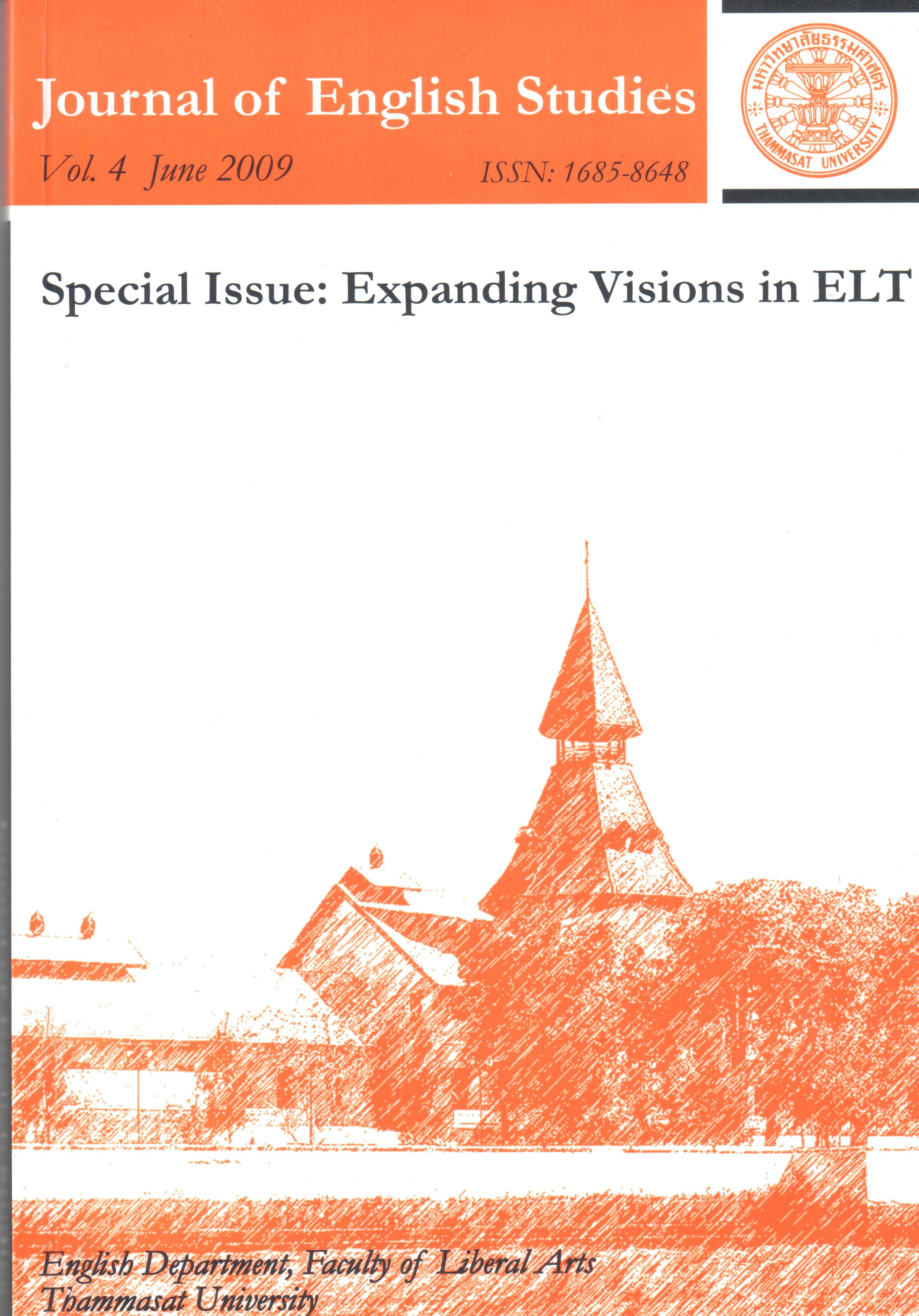Discussion Paper (Understanding L2 Acquisition in English Language Learners: The Interplay of Age-related, Cognitive, and Sociocultural Factors and Their Implications for Instructional Practices)
Main Article Content
Abstract
In this paper, I firstly focus on significant issues regarding the development of second language acquisition in general. After that, I discuss some major factors affecting second language acquisition in children and adults to provide a better understanding of the differences in acquiring L2 between the two groups. Finally, I suggest effective principles and instructional practices for L2 young learners to facilitate, promote, and enhance their English language achievement.
Article Details

This work is licensed under a Creative Commons Attribution-NonCommercial-NoDerivatives 4.0 International License.
Authors who publish with this journal agree to the following terms: Authors retain copyright and grant the journal right of first publication with the work simultaneously licensed under a Creative Commons Attribution License that allows others to share the work with an acknowledgement of the work's authorship and initial publication in this journal. Authors are able to enter into separate, additional contractual arrangements for the non-exclusive distribution of the journal's published version of the work (e.g., post it to an institutional repository or publish it in a book), with an acknowledgement of its initial publication in this journal. Authors are permitted and encouraged to post their work online (e.g., in institutional repositories or on their website) prior to and during the submission process, as it can lead to productive exchanges, as well as earlier and greater citation of published work (See The Effect of Open Access).References
Chamot, A., & O’Malley, J. (1986). A Cognitive Academic Language Learning Approach: An ESL Content-based Curriculum. Roslyn, VA: National Clearinghouse on Bilingual Education.
Chomsky, N. (1997). The Minimalist Program. Cambridge, MA: MIT Press.Cummins, J. (1983). Bilingualism and special education: Programs and pedagogical issues. Learning Disability Quarterly, 6(4), 373-386.
Elley, W. B. (1991). Acquiring literacy in a second language: The effect of book-based programs. Language Learning, 41, 373-411.
Ellis, R. (1994). The Study of Second Language Acquisition. Oxford: Oxford University Press.
Garcia, G. E. (in press). The reading comprehension development and instruction of English Language Learners. In C. Snow & A. Sweet (Eds.), Reading Comprehension. Guilford Press.
Gass, S. M., & Selinker, L. (2001). Second Language Acquisition: An Introductory Course.Mahwah, NJ: Lawrence Erlbaum Associates.
Hakuta, K. (1990). Bilingualism and Bilingual Education: A Research Perspective. Washington, DC: National Clearinghouse on Bilingual Education.
Krashen, S. (1985). The Input Hypothesis: Issues and Implications. London: Longman.
Larsen-Freema, D., & Long, M. (1991). An Introduction to Second Language Acquisition Research. London: Longman.
Park, G (1994). Language Learning Strategies: Why do adults need them?Unpublished manuscript, University of Texas at Austin.
Peregoy, S. F., & Boyle, O. F. (2001). Reading, Writing, & Learning in ESL: A Resource Book for K-12 Teachers.Boston: Addison Wesley Longman.
Perez, B., Torres-Guzman, A. (2002). Learning in Two Worlds: An Integrated Spanish/EnglishBiliteracy Approach. Boston: Allyn and Bacon.
Pica, T. (1985). The selective impact of classroom instruction on second language acquisition. Applied Linguistics, 6(3), 214-222.
Vogt, M. E., & Shearer, B. A. (2003) Reading Specialists in theReal World: A Sociocultural View. Boston, MA: Pearson Education, Inc.
Vygotsky, L. S. (1978). Mind in Society: The Development of Higher Psychological Processes. Cambridge: Harvard University Press.


